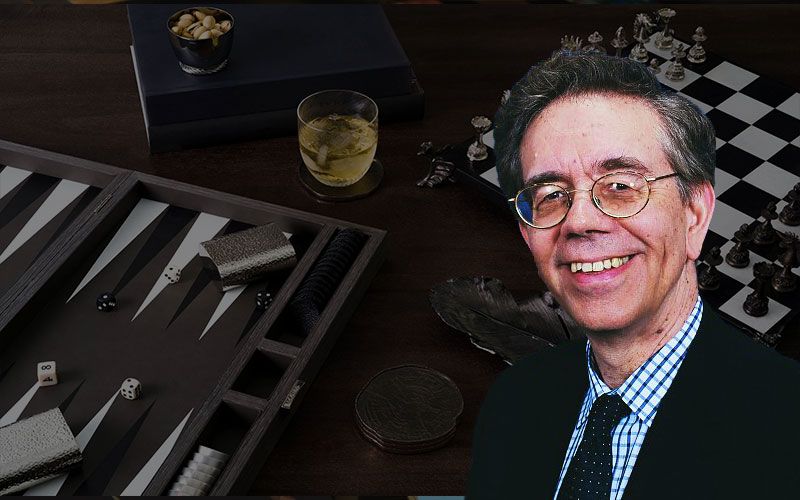
Slotting to make a key point and splitting your back checkers are two tactical ideas that dominate early-game play when more obvious choices like hitting blots and making points aren’t available. The 1970s and 1980s were the heyday of slotting. The preferred method of winning a game was to build an imposing prime (often by slotting points, then covering) and follow it with a crushing double. The older method, taking the points you were given and looking for a chance to escape your back checkers, was seen as antiquated and wimpy, a game plan only suited for geezers playing in the park.
This all changed in the 1990s with the arrival of the bots, first Jellyfish, then Snowie, and then in 2010 Extreme Gammon, the current top bot. The early bots didn’t slot their 5-point with an opening roll of 2-1, 4-1, or 5-1, as had been customary; instead, they split their back men with an ace. (The latest version of Extreme Gammon now prefers slotting with the 2-1 roll, and rollouts back up that decision.) These results swept the backgammon world, and soon almost everyone was splitting rather than slotting with opening aces.
While there was nothing wrong with copying the bot’s plays with the opening rolls, players soon began making serious mistakes in other parts of the game. Since these opening rolls were the most obvious examples of slotting, they “learned” that slotting was simply an error except in a few bizarre circumstances. As a result, they started missing strong slotting plays in all sorts of opening and middle-game situations. They’d discarded a key tactical idea on the basis of a tiny set of opening positions.
So when is slotting to be preferred to splitting? In general you’re looking for a combination of factors, some of which argue against splitting, others of which argue in favor of slotting. The next position illustrates these ideas pretty clearly.
Cash game, Black on roll, Black owns the cube.
Loading board
Here Black finds himself in a weak position with stacks and stripped points, while facing a strong Orange board. With the 2-1 roll, Black can try various things. He can play very safe with 13/10, split his back men with 24/21, split and build with 13/11 24/23, or purely build with 13/11 6/5. At first glance, no play leaps out as clearly right. Let’s see if we can whittle down the possibilities.
The problem with the splits is that Orange’s game has become just a little too powerful to abandon the anchor. Orange doesn’t actually have a lot of rolls to fill in the gaps in his prime, but he’ll be happy to launch a blitz if he can, and splitting gives him that opportunity. In fact, either split boosts Black’s chances of losing a gammon enormously – from about 20% after the non-split plays to around 28% after the split plays. Such high gammon chances would require the split plays to win at least 4% more games than the non-splits to be contenders. There’s nothing in the position to suggest that could happen, so let’s toss out the splits.
Absent the splits, we’re now down to a choice between the aggressive 13/11 6/5 and the quieter 13/10. The key here is to remember that Black doesn’t want to split anymore. But if splitting is too dangerous, then Black will need to build a front position quickly to stay in the game. There’s no guarantee that 13/10 will give him a position anytime soon. That play, after all, leaves five shots but still doesn’t give Black a lot of good point-making numbers. 13/11 6/5, on the other hand, leaves 13 shots but gives Black a ton of point-makers if it works. Slotting with 6/5 is right by a wide margin, and it’s right whether the cube is centered or Black already owns it.
One footnote to this position: you might reasonably think that duplication plays a role in this decision. When Black slots his 5-point, Orange needs fours to hit, but 4-2 and 6-4 already make good points in his board. But in fact the play is structurally correct and the duplication is irrelevant. If we move Orange’s inner-board points to the 4-point and the 2-point, so that fours don’t build any new points, then the slot is still correct, and by almost as wide a margin.